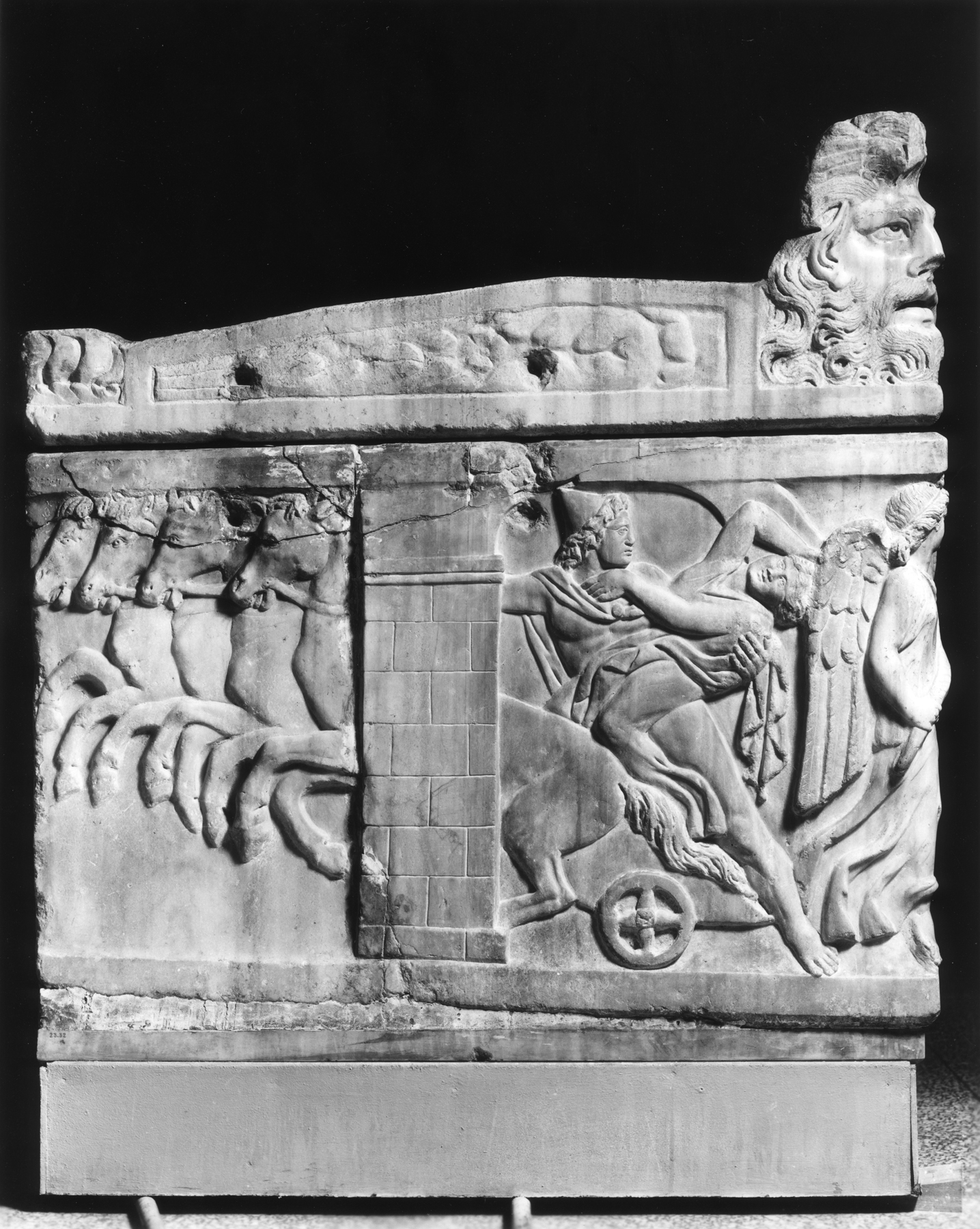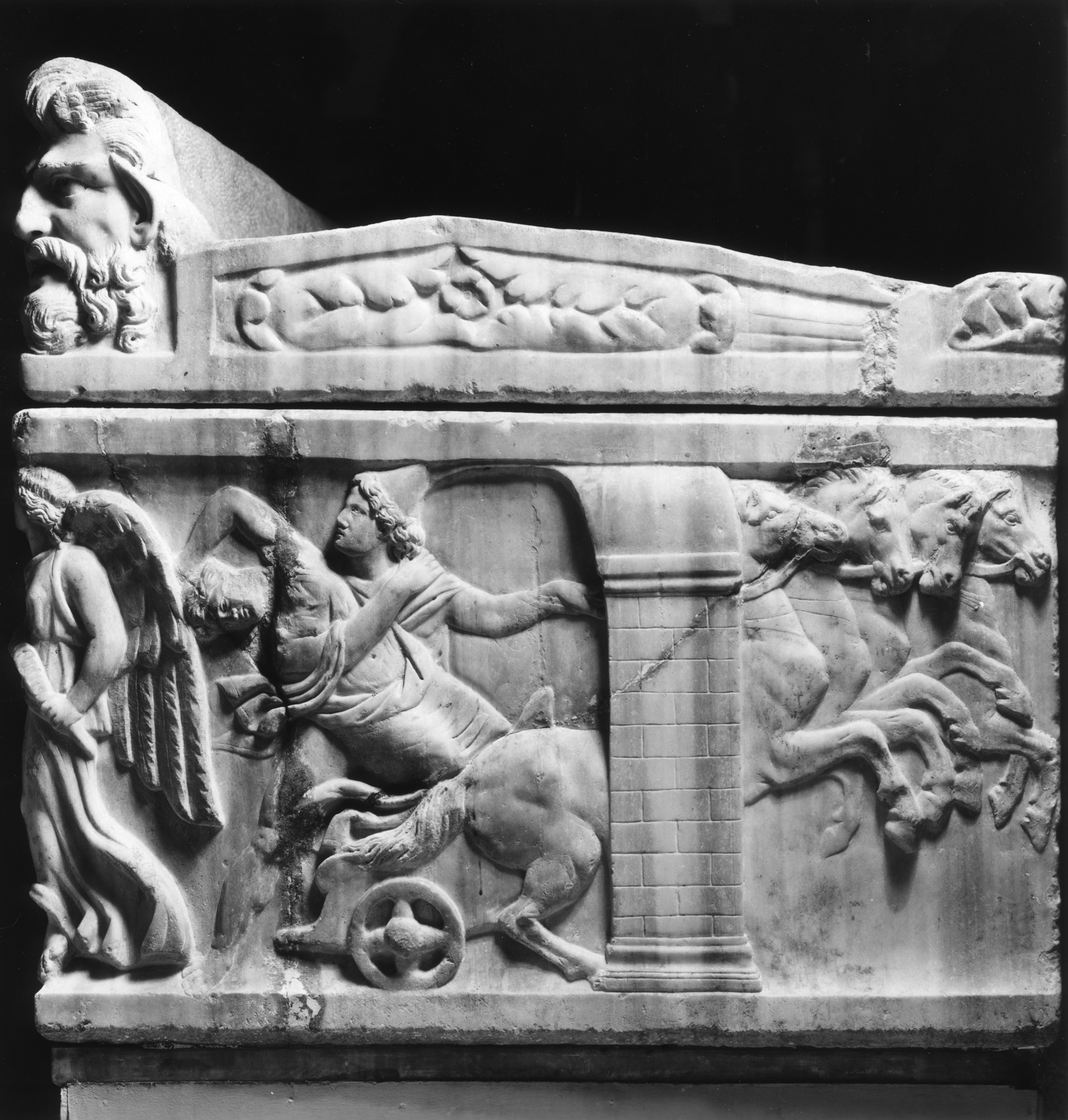Sarcophagus Depicting Castor and Pollux Seizing the Daughters of Leucippus
(Roman Empire )
Depicted in high relief, the twins Castor and Pollux, known as the Dioscuri ("sons of Zeus"), abducted and later married the daughters of King Leucippus. Here, the brothers seize the maidens amid a scene of confusion. On the ends, the Dioscuri carry off the women in their chariots. The Romans believed that the abduction of these mortal women by the twins represented the transition of the deceased from the human realm to that of the divine immortals. The violence of the front scene is echoed by the figures on the lid, where Victories sacrifice bulls on either side of a vase-like cult object. Large satyr heads flank the scene, as they do on several of the other sarcophagi displayed here.
Provenance
Provenance (from the French provenir, 'to come from/forth') is the chronology of the ownership, custody, or location of a historical object. Learn more about provenance at the Walters.
[Excavated from the so-called Licinian tomb, via Piave, Rome, 1885]; Clemente Maraini, 1885, by excavation; Don Marcello Massarenti, Rome, by 1894, by purchase [marble no. 3]; Henry Walters, Baltimore, 1902, by purchase; Walters Art Museum, 1931, by bequest.
Conservation
| Date | Description | Narrative |
|---|---|---|
| 5/19/1958 | Treatment | cleaned |
| 7/20/1970 | Treatment | cleaned |
| 1/1/1992 | Technical Report | x-ray diffraction; other |
Measurements
overall: 43 3/4 x 85 3/4 x 41 1/2 in. (111.1 x 217.8 x 105.4 cm);
lid: 41 5/16 x 86 3/4 in. (105 x 220.35 cm)
Credit Line
Acquired by Henry Walters with the Massarenti Collection, 1902
Location in Museum
Accession Number
In libraries, galleries, museums, and archives, an accession number is a unique identifier assigned to each object in the collection.
In libraries, galleries, museums, and archives, an accession number is a unique identifier assigned to each object in the collection.
23.32






